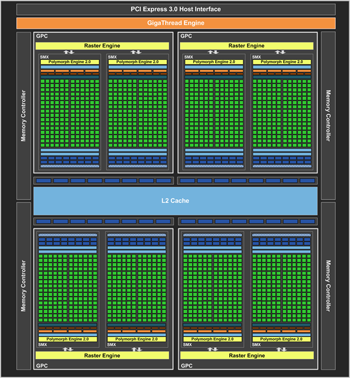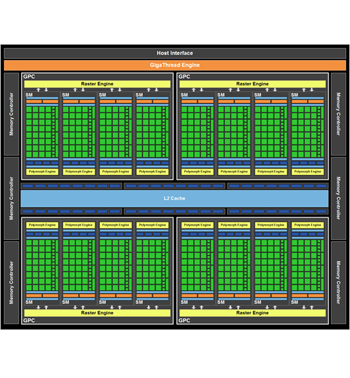Fermi reimagined
What does history teach us
Today NVIDIA is unveiling its flagship single-GPU graphics card that's squarely aimed toward the well-heeled enthusiast. Readers with a penchant for graphics will have seen the numerous leaks springing up in the preceding two weeks, with NVIDIA dutifully filling as many as it can, but now is the time to set the record straight with an in-depth review of the Kepler-based GeForce GTX 680 2GB GPU.
Back in 2010, NVIDIA's publicly-known GPU trajectory, as divulged by CEO Jen-Hsun Huang, informed us that the Fermi GPU architecture was to be succeeded by Kepler in late-2011, which in turn is set to be replaced by Maxwell in late-2013, with the primary focus one of increasing the performance-per-watt metric through a combination of die shrinks and general optimisations.
Fermi, if you recall, debuted in the consumer space in the form of the now-maligned GeForce GTX 480 in March 2010. Aiming to be all things to every type of user, NVIDIA's strategy of one-fits-all for consumer, workstation and professional markets meant that the big-die GPU, a hybrid of sorts, traded pure gaming performance for a forward-looking architecture. Worse still, the innate complexities of bringing-up such an overarching GPU left NVIDIA with a manufacturing and marketing headache.
Perhaps the first incarnation of consumer Fermi came too early; it seemed as if sales and marketing won the battle against engineering, resulting in the release of a half-baked product. With time being the greatest teacher, NVIDIA cleaned up Fermi and effectively re-released it as the GeForce GTX 580 some six months after the GTX 480's lukewarm arrival. Higher clocks and a complete architecture made it what Fermi should have been in the first place, and even today GTX 580 continues to offer reasonable value at the readjusted £315 price point.
Now, finally, will the real Fermi please stand up
So why the need for a history lesson, dear reader? Because NVIDIA has taken all the good guts of Fermi, cleaved away any extraneous fat, and repackaged it as Kepler GK104, or GeForce GTX 680 2GB card to you. Yup, Kepler is the original Fermi architecture polished to an inch of its life, with many a lesson seemingly learnt from AMD's recent Radeons. Intrigued? Let's bring the ever-useful GPU block diagram out of retirement and explain all.
Kepler vs. Fermi - the differences
What you're looking at is a hugely simplified high-level overview of Kepler and Fermi GPU architectures. A cursory glance indicates that Kepler is a super-sized version of Fermi, which is a reasonably accurate method by which to describe it, but the devil is in the details, because it is both super-sized from a core count yet physically almost half the size.
Both NVIDIA architectures, as used on the GTX 680 and GTX 580, are based on combining mini-GPUs that are known as Graphics Processing Clusters (GPC). Both GPUs have four of these GPC 'squares,' flanked by the usual ROPs and memory controllers - more on those later. Each GPC is now home to two beefed-up Streaming Multiprocessor units (SMs) - the thin rectangular sections - rather than four in Fermi, though the overhaul is radical enough for NVIDIA to term them SMX - hey, 'X' just sounds cooler, right? - rather than plain ol' SM.
Going from top to bottom, Kepler's to-motherboard host interface has been jacked up from PCIe 2.0 to PCIe 3.0, enabling, potentially, double the bandwidth, which is useful as GPUs become increasingly more powerful. Controlling the thread scheduling on both chips is what NVIDIA terms the master GigaThread Engine. This feeds each GPC. In this sense, nothing much has changed.
However, the main focus of Kepler rests with improving the oomph provided by each GPC, and each of these little green squares you see is a CUDA core. It doesn't take a genius to figure out that Kepler has more, lots more, than Fermi, so the next step is to provide an exploded view of an SMX, to see just what NVIDIA has been up to.











